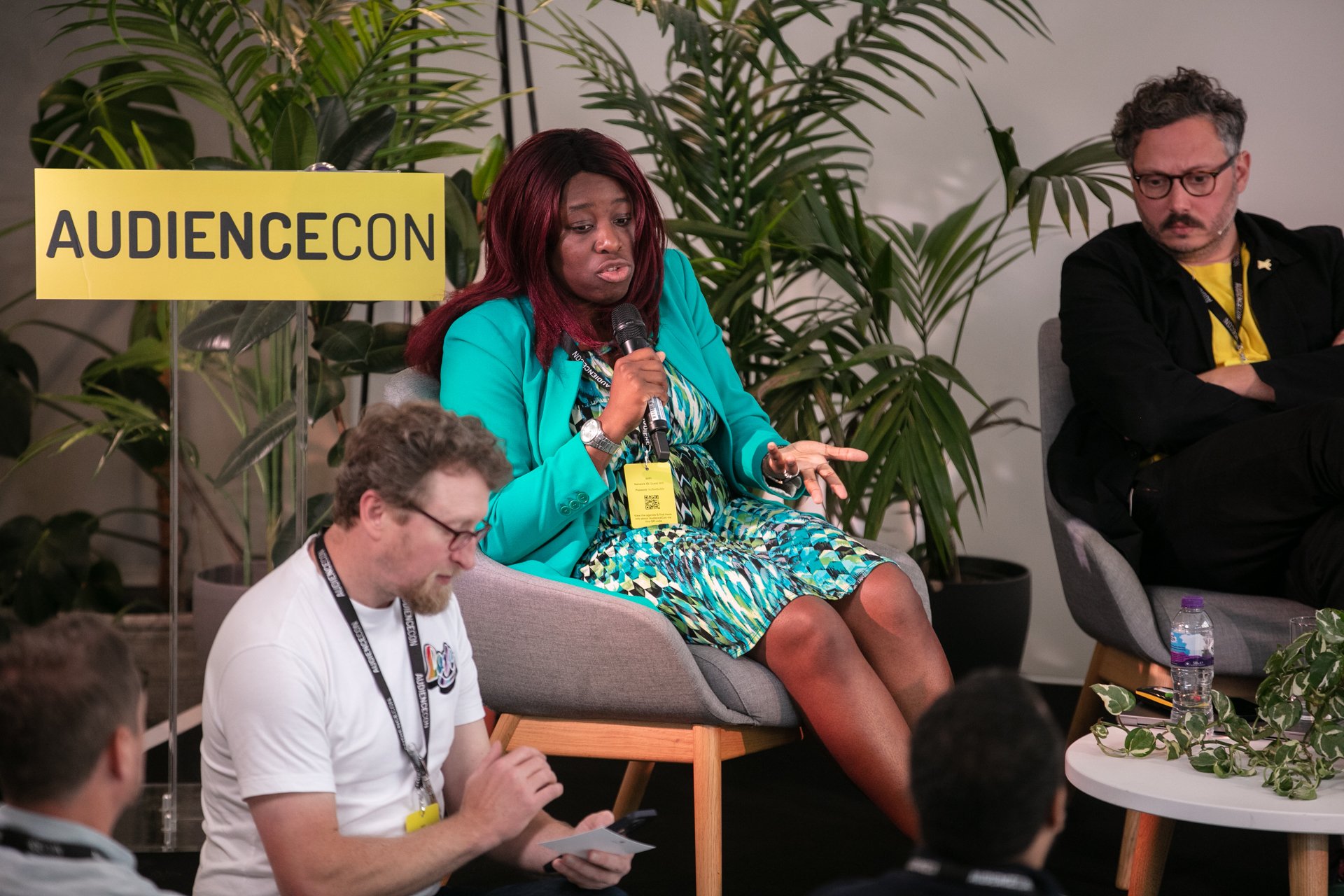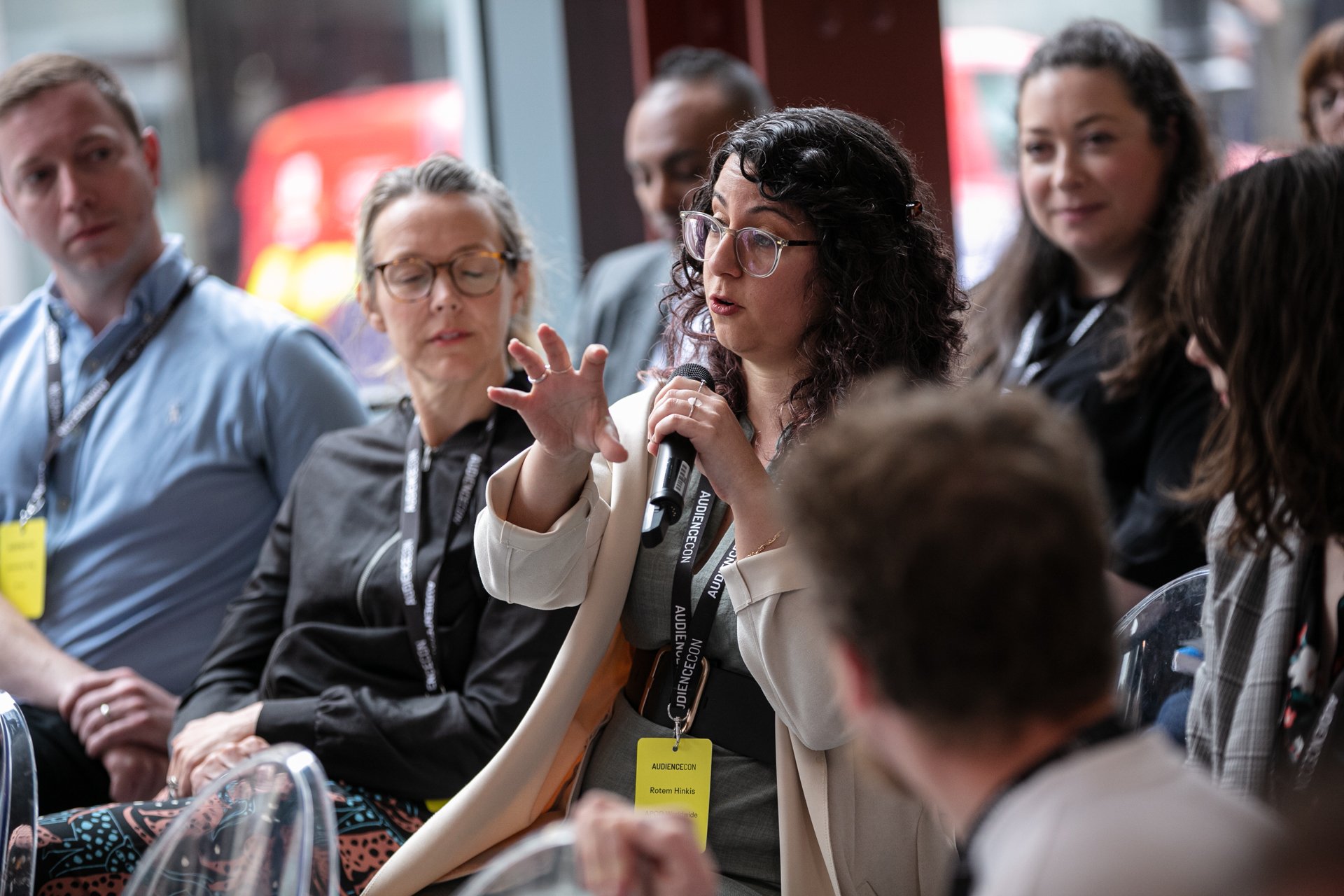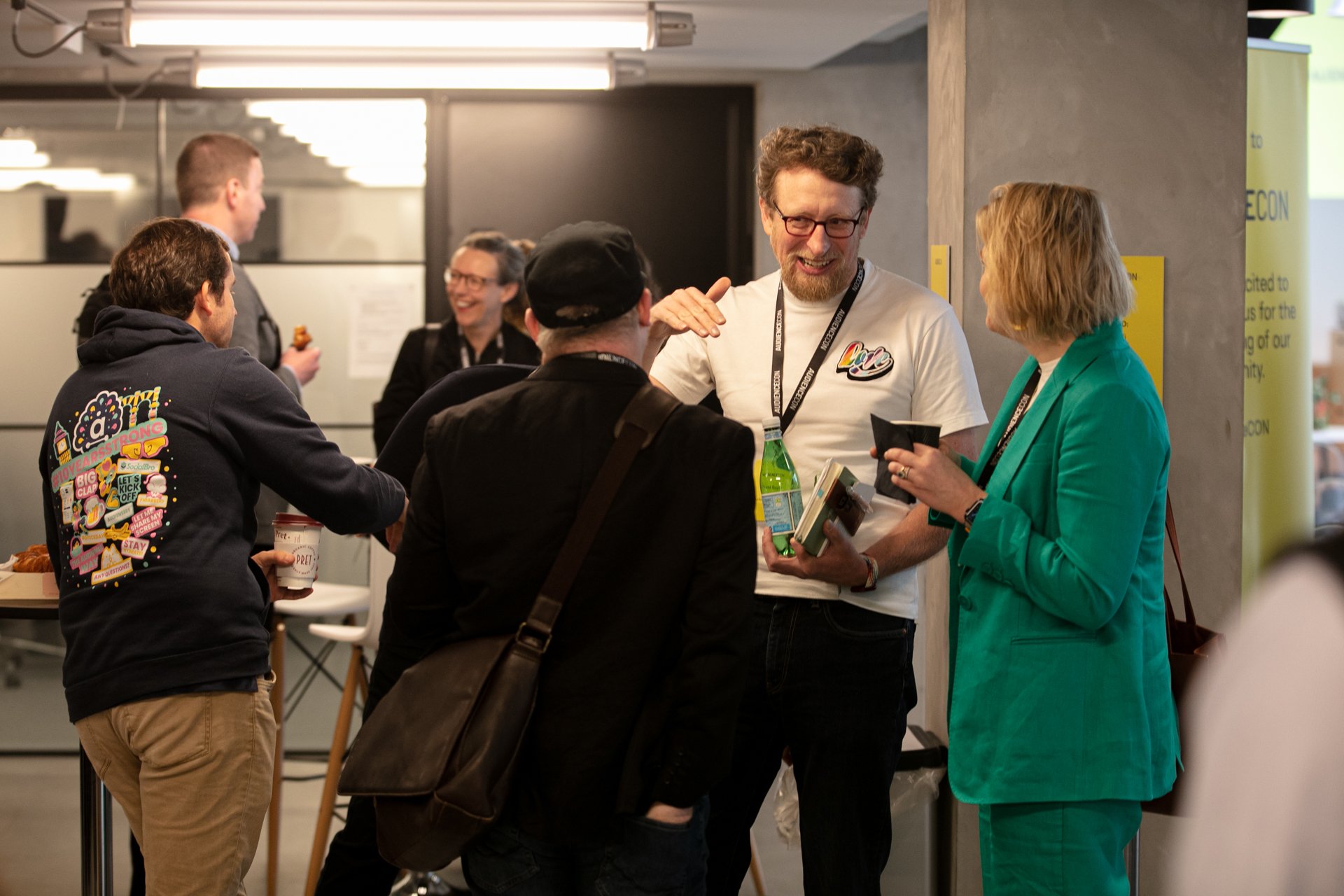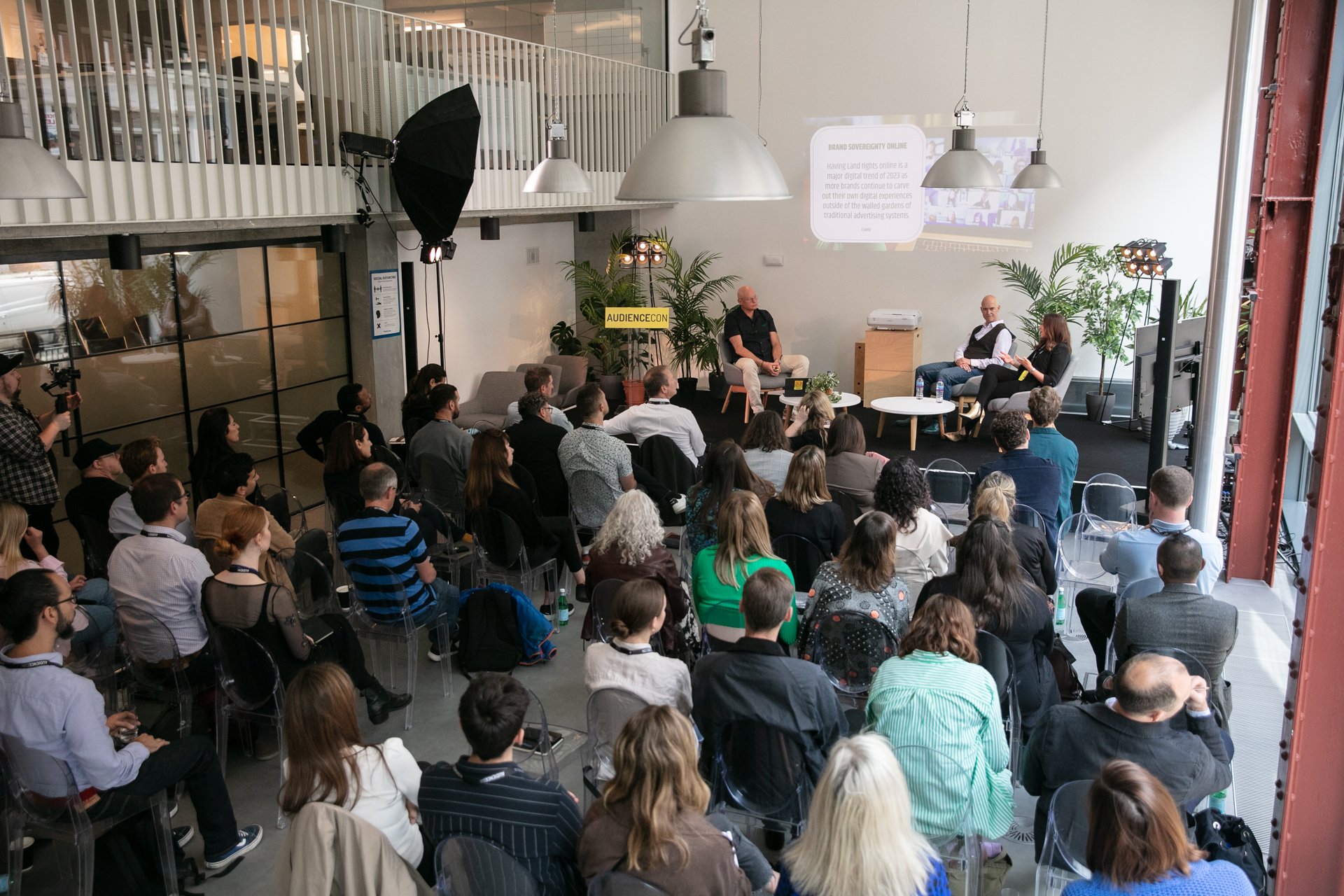10 lessons for marketers from AudienceCON
Last month was a momentous occasion, as we participated in the first AudienceCON, a one-day conference designed to inspire and equip attendees with knowledge and tools to drive meaningful engagement with target audiences.
This spectacular event brought together some of the brightest minds in the field of audience research to share best practices, insights and strategies for engaging audiences meaningfully in an ever more competitive marketing environment.
The day was packed with fascinating panels and talks, from harmonizing data and action to the role of deep human insights in creative strategy. Speakers included David Boyle, Christine Osazuwa, Laura Simpson, Mike White and many more!
With so much incredible knowledge shared, we felt we needed to pull it all together into one succinct blog for you to digest. So, we’ve compiled 10 key lessons for marketers from AudienceCON.
1. Trust creative instincts while leveraging insights
Here at Audiense, we constantly sing the praises of audience intelligence. If you want to create truly impactful campaigns and connect with your consumers, you need the right data to guide you. But as Laura Simpson, CIO and McCann Worldgroup highlighted, you also need to trust your creative instincts. Data can be interpreted in many ways and ultimately, your intuition and expertise as a marketer should come first. Balance your own instincts with research, and be open to what consumers are telling you, to create five-star campaigns that will resonate with your audiences.
2. Innovation comes from taking risks, not just following data
On a similar note, while data can be your guiding star in brand growth, product development and campaign strategy, true innovation is about taking risks. A recurring theme through AudienceCON across several of the panels and talks was the need to take risks. Creativity and risk-taking were highlighted as two critical drivers of innovation and success for organisations. Data can help marketers identify when audiences connect or disconnect, but it cannot accurately predict ‘winners’, making cultural relevance and a human touch in your campaign strategy incredibly important.
3. Shift your organizational culture
A significant part of the conference focused on the role of organizational culture in driving customer-centricity. Despite many organizations claiming to be customer-centric, it was clear from panel discussions and our audience that many organizational cultures and KPIs are still all about the business. But what can be done? The old adage "culture eats strategy for breakfast" resonated with many attendees, emphasizing that good culture leads to good processes. Marketing needs to play an active role in training staff, rewarding customer-centric metrics, and breaking down organizational silos to encourage collaboration and knowledge sharing.

4. Tap into human truths through stories
At the heart of every great brands, there’s always a story. Whether you dream of putting a 1,000 songs in someone’s pocket or you want to bring imagination to flatpack furniture, we are programmed as people to listen to and share stories. Simply put, stories activate empathy in audiences in a way that data alone can’t. Human stories and truths remain powerful in engaging audiences for brands, even as data and AI improve our ability to target niche segments. It falls to marketing to find ways to fuse an abundance of data sources, ethically, to tell rich human stories that will connect with a wider audience.
5. Use AI judiciously
There’s no escaping from it, AI is here to stay. According to Richard Bowman and Louisa Livingston of Audience Strategies, ChatGPT can get marketers 80% of the way to insights without traditional research. The question is, how can marketers use it judiciously to enhance their day-to-day work? We know that AI tools like ChatGPT can provide quick insights, you can read all about it here, but it’s our responsibility to fact-check outputs and identify gaps through traditional research. It may miss crucial human truths and "nuggets of gold" only found through traditional research and is also likely to be subject to cultural and Western biases. Use AI as a starting point but supplement it with human analysis and expertise.
6. Measure success customer-centrically
Ever heard of a vanity metric? Once upon a time, brands were hyper focused on followers and likes as a measure of success. But if you want to satisfy your customers, you need to go beyond the flashy stats that focus on outreach and measure success customer-centrically. In our empowering marketing strategies panel, it was suggested that organizations should focus on customer centric KPIs such as Net Promoter Score (NPS), as this is more likely to reflect the full customer journey from acquisition to retention.

7. Be transparent in how you use data
In a data-driven world, consumers have become increasingly wary of brands misusing their data as part of their marketing campaigns. This is reflected in the introduction of legislation such as GDPR, a data protection law introduced by the EU in 2018 which declares that everyone responsible for using personal data must follow strict data protection principles or risk fines. AudienceCON highlighted how transparency builds trust with audiences By clearly communicating how you intend to use data, and the tools you use to collect it, you empower customers to evaluate and understand how their data is being utilized.
8. Test assumptions with audiences
Instincts are important, but assumptions will only get you so far. Testing with audiences early and often is a forgotten art that can uncover issues and improve your overarching strategy. In fact, it’s been shown that taking products and campaigns out for user testing with a small group can reveal 80% of issues before a big launch. Embrace a test-and-learn approach with your marketing to challenge biases and experiment with messaging and creativity, this will allow you to refine campaigns, build long term relationships, and slowly shift perceptions with your target audiences.
9. Diversify your perspective
An interesting takeaway from the event was the need for diversity of thought among organizations and campaigns. According to research, people tend to support diversity in principle but fail to take action in their day-to-day work. But if you’re failing to diversify, you’re missing out on a plethora of benefits that could take your campaigns to the next level. Building diverse creative and marketing teams can foster innovation, present a multitude of perspectives and challenge any inherent biases, which will enhance the way you approach your target audiences. Consider different audience segments, from loyal fans to untapped markets, to broaden your reach and grow your brand.

10. Foster an insight-driven culture
We touched on culture earlier, but it really does play a tremendous role in growing and developing your organization. It plays a bigger role than process, if audience insights are not valued at every level of your company, you need to find ways to educate colleagues. Meaningful insights should be a core value within your organization, as it allows you to understand how to manage change and balance insights with instincts. Define, document, and live insight-driven culture from the top-down.
Key takeaways
AudienceCON provided valuable insights and strategies for marketers to put audiences at the heart of their strategies. By trusting creative instincts, fostering a customer-centric culture, and leveraging data judiciously, marketers can create impactful campaigns that resonate with their target audiences. Here are five key things to bear in mind:
- Unearthing real audience needs: The conference highlighted the importance of going beyond basic demographics and understanding the unmet needs and problems faced by audiences.
- Balancing data with creativity: While data provides valuable insights, creative instincts and risk-taking were emphasized as crucial drivers of innovation and success. Cultural relevance and the biases inherent in data were also discussed, emphasizing the power of a human-centric approach.
- Transforming organizational culture: The role of organizational culture in driving customer-centricity was a significant focus. Attendees recognized the need to shift from business-centric cultures to customer-centric ones, involving training, rewarding customer-centric metrics, and breaking down silos.
- Embracing storytelling and transparency: Storytelling was highlighted as a powerful tool to resonate with audiences, going beyond data-driven insights. The importance of transparency in the use of data and tools was also stressed to build trust with audiences.
- Looking ahead: With the abundance of data, attendees were encouraged to consider their role in bringing the best insights to the forefront and adding value. Understanding customer pain points and interactions with brands emerged as critical aspects of audience engagement.
Want to be part of the AudienceCON action? You can watch the sessions here.






